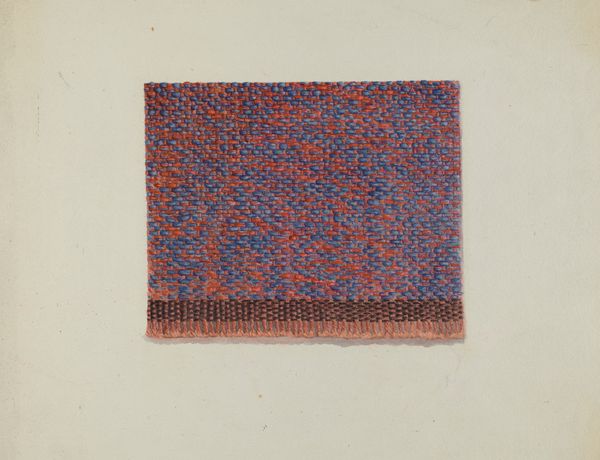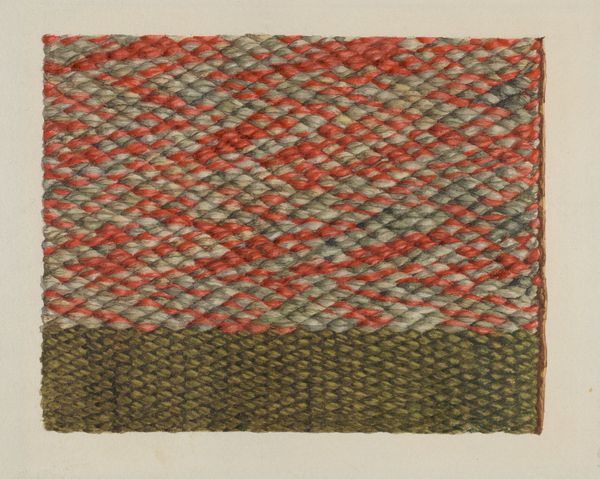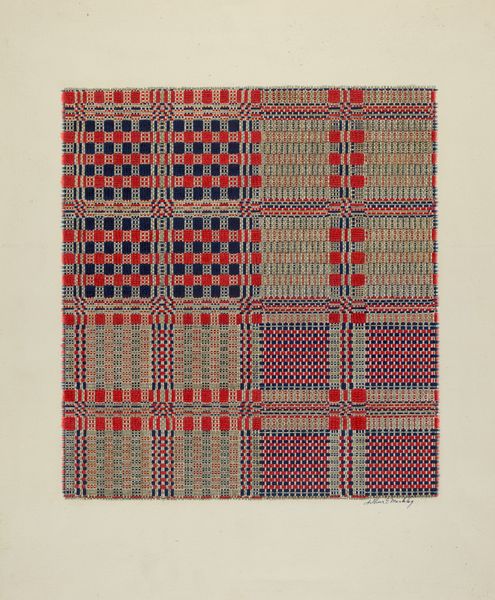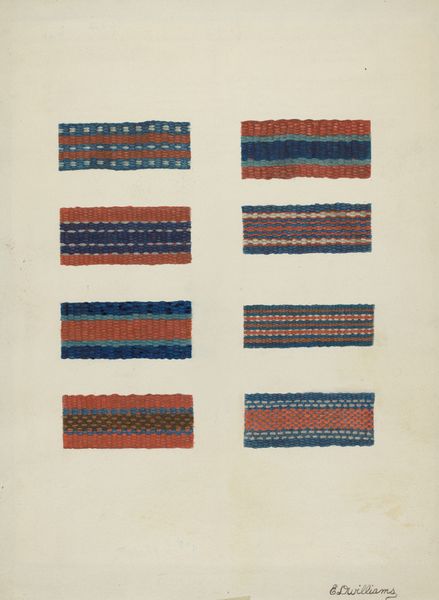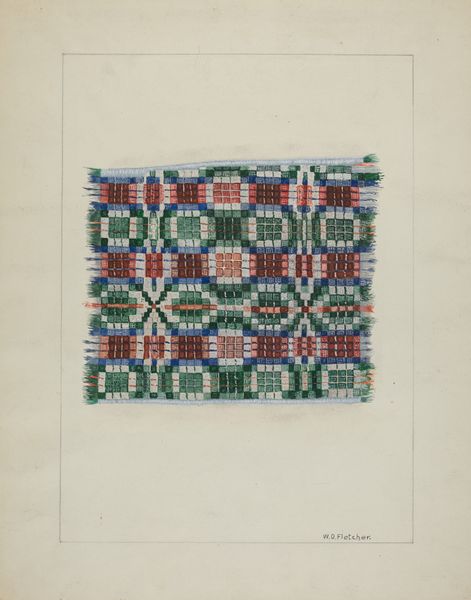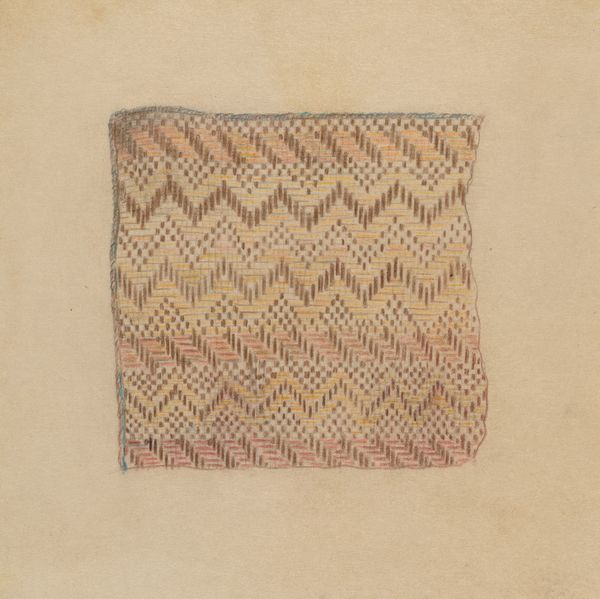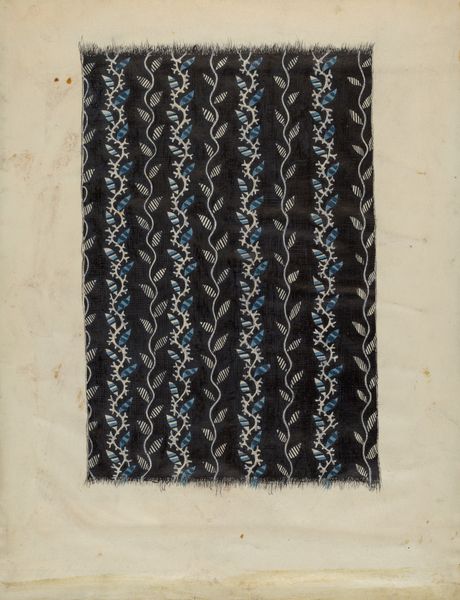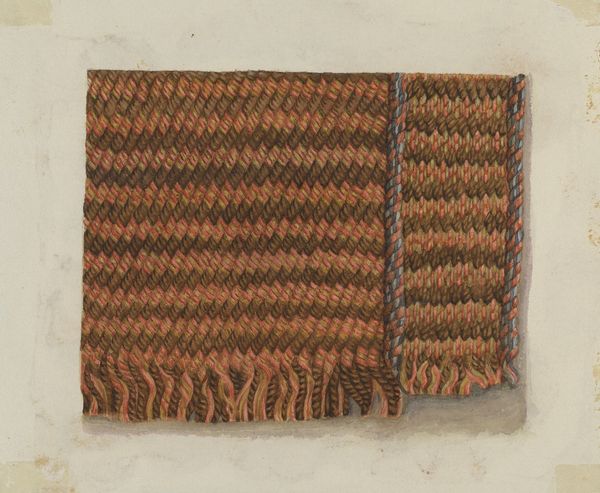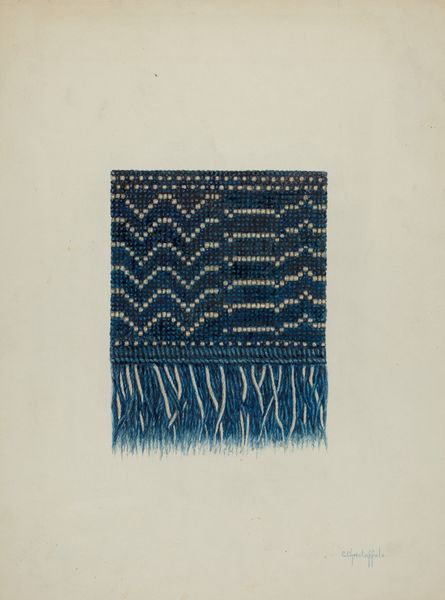
drawing, weaving, textile, watercolor
#
drawing
#
weaving
#
textile
#
watercolor
#
folk-art
#
abstraction
#
watercolor
Dimensions: overall: 21.6 x 27.9 cm (8 1/2 x 11 in.)
Copyright: National Gallery of Art: CC0 1.0
Curator: Here we have Lucille Chabot's "Shaker Rug Strip," circa 1936. It's rendered in watercolor and drawing, depicting a woven textile. Editor: My immediate impression is a feeling of rustic simplicity. The colours—red, blue, and green—are vibrant, yet the overall effect is surprisingly muted and earthy. It looks like a fragment of a memory. Curator: What's striking is the artist’s meticulous rendering of the rug's construction. Chabot doesn't just depict a finished object; she illustrates the warp and weft, the very process of weaving. Consider that the Shakers valued utility and simplicity. This artwork seems to honor those ideals by revealing the labor involved in crafting something so functional. Editor: Yes, and within those interwoven threads, I see echoes of Shaker spirituality. The repetitive patterns speak to their emphasis on ritual, on finding the divine in everyday tasks. Red, of course, is passion, blue, loyalty and perhaps a heavenly connection and the green the growth of the community, all fundamental aspects of the Shaker creed. Curator: Absolutely, but it's vital to acknowledge the historical context. This watercolor isn't just about Shaker ideals; it's also a product of its time. Consider the material conditions that shaped its creation. What kind of paper did Chabot use? What was her access to watercolors? These questions ground us in the specifics of artistic production, countering romantic notions of solitary genius. Weaving as a trade becomes relevant, since textiles are deeply entangled with social factors. Editor: But to focus solely on materials risks overlooking the powerful symbolism inherent in textiles, particularly those created by a religious community. This rug isn't just made of fibers; it's woven with meaning. Think about the symbolic weight of the colors. How each one contributes to a broader narrative. And, importantly, consider it alongside other visual examples of Shaker folk art. Curator: I'd counter that our exploration into this work can’t overlook the socioeconomic value attached to material arts practices or textile as an exported commodity. While understanding what these artistic choices and spiritual symbols may have represented, it remains necessary to examine this piece as an emblem of a craft or trade and labor division. Editor: It's been illuminating to consider this artwork through both a material lens and one of symbolism. Curator: I concur; by considering all these components of “Shaker Rug Strip,” we start to appreciate its richness and historical significance.
Comments
No comments
Be the first to comment and join the conversation on the ultimate creative platform.
